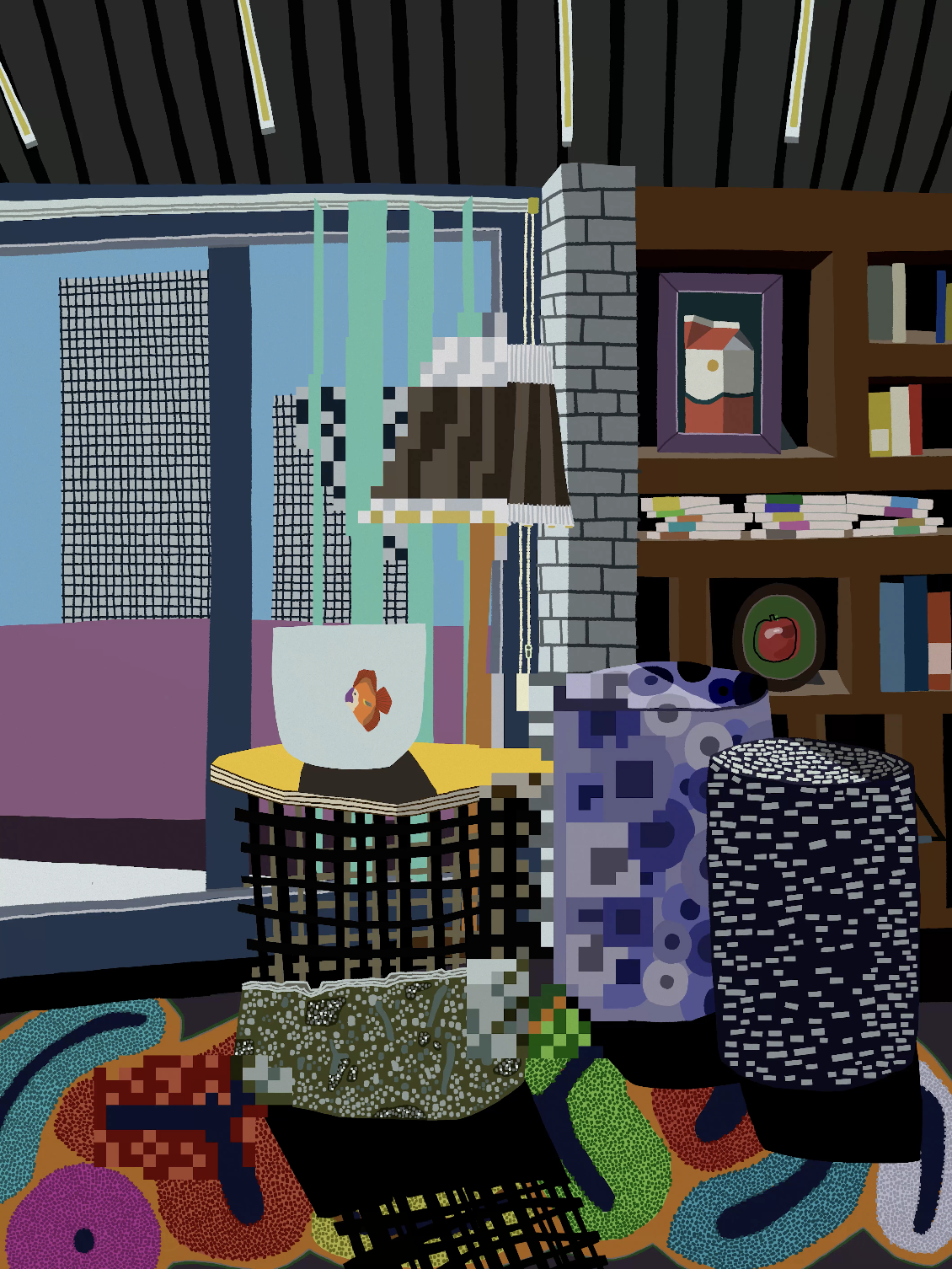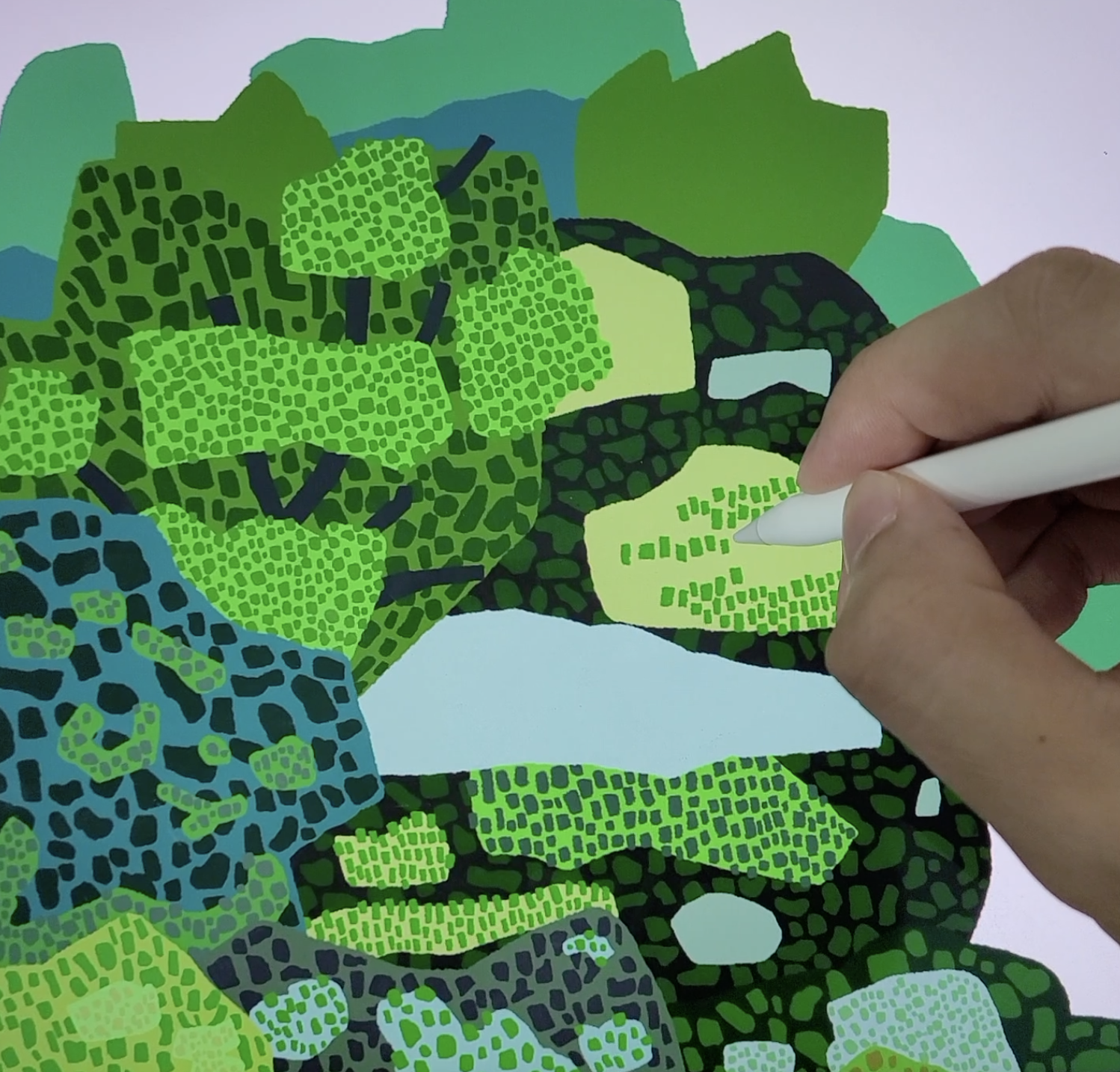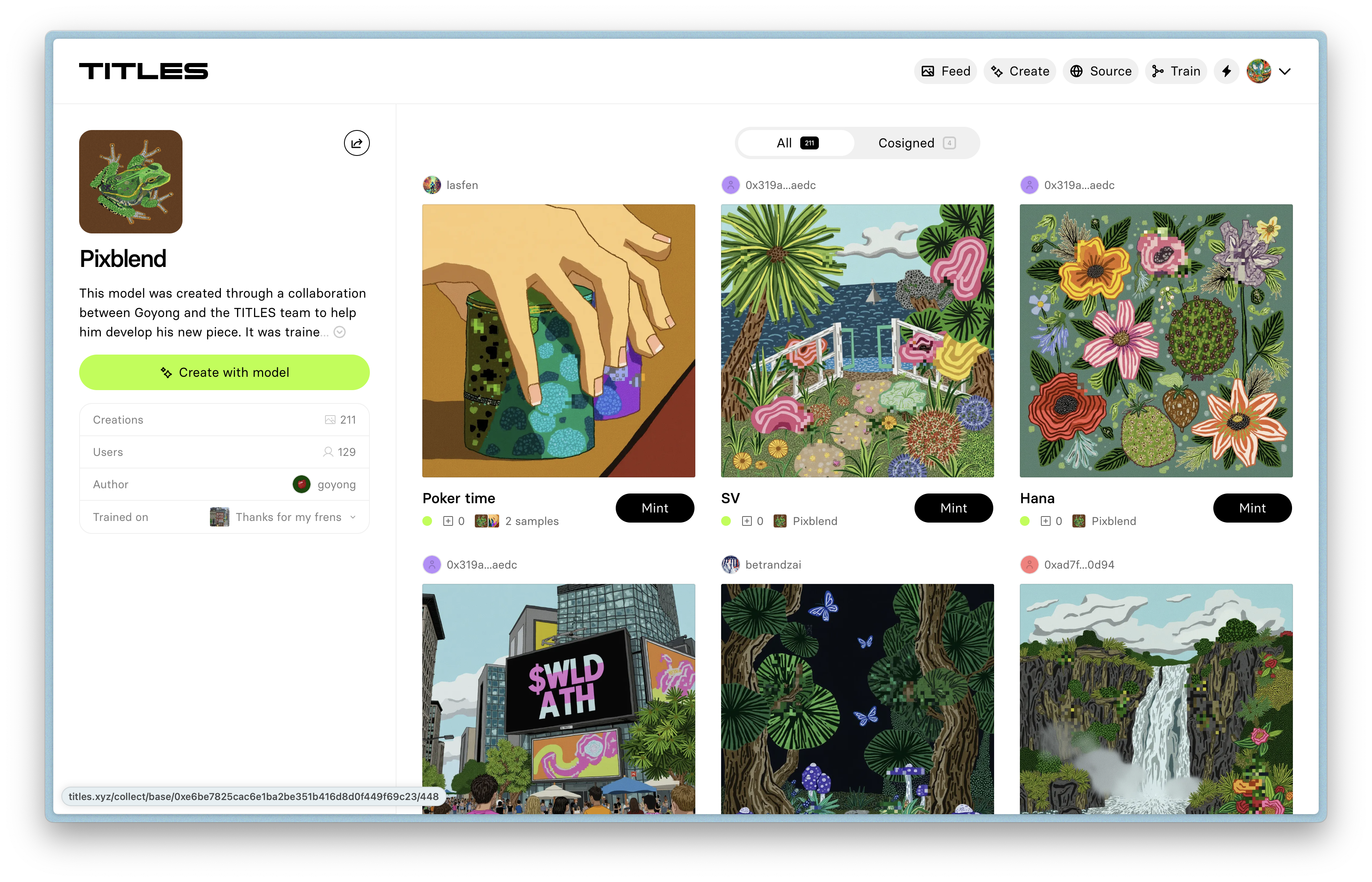Goyong is a Seoul-based digital artist whose work reflects a deep interest in the ways technology expands our perception of the world. Across history, each technological revolution has altered our relationship to space, time, and representation. Goyong explores the current threshold we occupy: one in which digital technologies open up portals into virtual realms.
Through a distinctive fusion of painting and animation, his practice depicts familiar scenes—landscapes, animals, peaceful interiors—but renders them through visible pixelation and subtle motion. The result is a visual tension between the familiar and the foreign, the painterly and the computational. For Goyong, the pixel is not just a stylistic choice, but a gesture at the unseen dimensions beyond the screen.
As part of a collaboration with TITLES for the opening of World’s flagship space in Seoul, Goyong has developed a custom AI model trained on his style. The model will serve as an extension of his work, designed to open new creative pathways within his evolving visual world.

Your work depicts natural landscapes, but your style draws attention to the digital medium you’re working in. Tell us more about this contrast between your style and subject matter. Are your works meant to connect us with nature or to draw attention to our distance from it?
Nature appears frequently in my work simply because it’s one of the things I truly love. Sometimes it’s nature itself, other times it’s ordinary moments from daily life. I believe that when something familiar is presented in an unfamiliar way, it draws attention. And because nature is a familiar subject, it allows me to communicate deeper ideas to a broader audience more easily.
I do intentionally create a sense of distance between the viewer and the work—inviting people to reflect on the society we live in today. We’re living in a time of AI and blockchain, yet in many ways we’re just observing it all through screens. We often don’t really understand how these technologies function, and before we even have time to think about them, something else appears on the monitor.
That’s why, in my work, the pixelated areas represent a dimension beyond the screen—a world that exists behind what we see. Through this, I hope viewers will reflect on what it is our current society is truly trying to conquer.
What do pixellation and motion allow you to express in your work?
The main purpose of my work is to explore the concept I refer to as “the conquest of dimensions,” and I believe movement—the shifting colors of pixels—plays the most effective role in expressing this.
The Second Industrial Revolution was, in many ways, about the conquest of space. Advancements in transportation allowed us to travel farther than ever before. The Third Industrial Revolution was about the conquest of time, where factories and machines enabled us to produce more, faster.
Now, I believe we’re at the beginning of the Fourth Industrial Revolution. To me, technologies like AR, VR, blockchain, and crypto represent a leap in dimensional progress. We are now beginning to conquer invisible realms—worlds beyond what we can physically see. And that world exists beyond the screen. My work is a visual expression of that space.
Because of the pixel elements, my pieces sometimes take on an abstract quality—so I like to think of it as a form of digital abstraction. Digital tools are giving rise to artistic expressions that weren’t possible in traditional art. Through pixels—the smallest unit in digital media—I’m able to express both sharp realism and soft ambiguity at the same time. After all, even the areas beyond the pixelated sections are ultimately just many tiny pixels coming together to form an image.
To me, that’s the most honest and digital way of expressing art.

How do you view the relationship between nature and technology?
Lately, I’ve been feeling that we’re far too focused on progress. Of course, technology has always played a vital role in the advancement of humanity. But looking back at all the phases of industrial development, I believe we’re now living in the most turbulent and transformative era yet.
In the past, nature was seen as something untouchable—beyond our reach. But now, we use nature to generate energy. Ironically, the more energy we produce and consume, the more we end up destroying nature itself. And in response—almost as if to answer us—nature seems to strike back with even more powerful disasters each year. It’s as if, whenever humanity tries to cross a line with its technological ambition, nature becomes the voice through which something higher speaks.
Still, I believe we’ll continue trying to embrace and solve even that—by creating new technologies, just as we always have.
Tell us more about your decision to go into digital art. What attracted you to using technology in your own work?
Before I began working in digital art, I majored in sculpture. I mainly created large-scale pieces using metal. Then one day, I came across one of Deekay’s animations on my Instagram explore feed—and that moment changed my life. The instant I saw his work, I knew I wanted to create animations like that too.
From there, I discovered Web3 and NFTs and became convinced that this movement wasn’t just a trend, but an inevitable cultural shift. As I revisited art history, I started asking myself why certain artists were remembered and respected through time. What I found was that most of their works reflected the era they lived in. That realization shaped my approach. I’m now trying to capture the spirit of this era through my own lens—and for me, that means expressing it through digital art.

How do you think AI will change the way we relate to art?
AI will enable us to create more than ever before. Until now, creating art has always required experience. We needed some kind of reference or memory to build from. Even scenes imagined or dreamed are, in some form, rooted in past experiences, whether we’re aware of it or not.
But AI has the ability to simulate what we’ve never experienced, and present it in a way that feels as if we have. Through that, we’ll be able to create entirely new things we couldn’t have imagined before.
AI isn’t a replacement—it’s a tool. And that’s why we should embrace it. To me, it’s like knowing how to drive or not. It’s not about whether we agree with it, but whether we know how to use it.
What does it mean for you to have your own model on TITLES?
The AI model developed in collaboration with TITLES will open up a new space for imagination and creativity. At first, I had my doubts about the idea of training an AI on my own body of work. It made me worry that my artistic identity—and all the time and effort I had poured into my practice—might be diminished or even lost.
But after hearing the vision that the TITLES team shared, I came to see this model as a tool that can expand what I’m capable of. After this exhibition, I also plan to create new work based on the outputs from this model—and I’m genuinely excited to see what kind of pieces I’ll end up making. Try Goyong’s model on TITLES, here.

Closing
We’re so excited to have worked with Goyong on his new model and presenting his works at the World flagship space in Seoul. We’re even more excited to see what each of you come up with creating through his model. Please follow Goyong on Instagram, Twitter, and TITLES.
Much love,
— TITLES